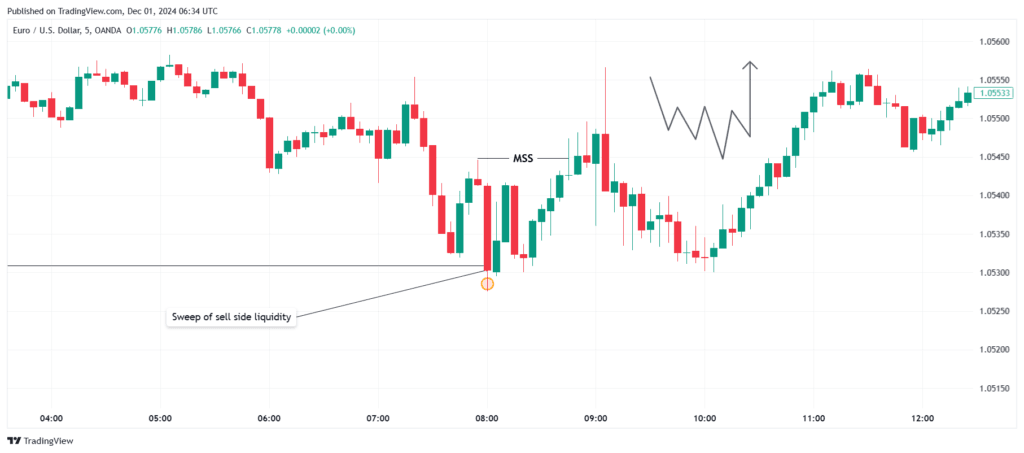In the world of Forex trading, understanding the dynamics of the market is essential for success. One of the most critical time frames for Forex traders is the London Kill Zone, a powerful concept within the Inner Circle Trading (ICT) methodology. This period, marked by heightened volatility and liquidity, offers a unique opportunity to capitalize on market movements. In this guide, we’ll explore the significance of the London Kill Zone, its role in ICT trading, and how traders can leverage it to boost profitability.
What is the London Kill Zone in Forex?
The London Kill Zone refers to a specific period during the London trading session, typically from 8:00 AM to 12:00 PM GMT, when the market experiences heightened volatility and liquidity. This time frame is pivotal for Forex traders because it overlaps with both the Asian session closing and the New York session opening. As a result, there is an influx of market participants—including financial institutions, hedge funds, and retail traders—which creates significant price movements.
- Time Frame: 8:00 AM to 12:00 PM GMT.
- Market Participants: Major financial institutions, hedge funds, retail traders, and high-volume market players.
- Market Impact: Increased liquidity and volatility lead to actionable trading opportunities.
| Time Zone | London Kill Zone Time | Start Time | End Time |
|---|
| GMT | London Kill Zone | 8:00 AM | 12:00 PM |
| UTC | London Kill Zone | 8:00 AM | 12:00 PM |
| EST | London Kill Zone | 3:00 AM | 7:00 AM |
The London Kill Zone is particularly important for traders following the ICT framework, as this period aligns perfectly with the application of core ICT concepts like Break of Structure (BoS), Change of Character (ChoCh), and liquidity pools. By understanding the dynamics of the Kill Zone, traders can identify high-probability setups and position themselves for maximum profitability.
Why is the London Kill Zone Crucial for Forex Traders?
There are several reasons why the London Kill Zone is a high-priority period for Forex traders looking to capitalize on volatility and liquidity. Here’s why traders should focus on this time frame:
1. Heightened Volatility:
During the London Kill Zone, market activity peaks as financial institutions and retail traders execute large-volume trades. This heightened volatility creates significant price swings, providing opportunities to profit from short-term movements. The increased price action also helps traders identify breakouts and reversals, both of which are crucial for successful trading strategies.
2. High Liquidity:
Liquidity is the ease with which an asset can be bought or sold without affecting its price. The London Kill Zone sees a surge in market participants, leading to high liquidity, which minimizes slippage and ensures better execution prices. High liquidity is essential for making precise entries and exits, especially for traders executing scalping or breakout strategies.
3. Strategic Trading Opportunities:
The London Kill Zone presents an ideal environment for traders to employ technical analysis. Key levels of support and resistance are often tested during this time, providing opportunities for breakout or reversal trades. Traders can use tools like moving averages, Fibonacci retracements, and candlestick patterns to fine-tune their trading strategies.
4. Influence on Major Currency Pairs:
The London Kill Zone significantly affects major currency pairs like EUR/USD, GBP/USD, and USD/JPY. These pairs tend to exhibit the most significant price movements during this time, making them ideal for traders looking to capitalize on volatility. Understanding which pairs are most active allows traders to focus their efforts on high-probability setups.
5. Alignment with Economic News Releases:
Many important economic news releases happen during the London session, often leading to sharp market reactions. The overlap of the London Kill Zone with economic announcements gives traders a unique opportunity to anticipate price movements and adjust their strategies accordingly.
Key Characteristics of the London Kill Zone
Understanding the characteristics of the London Kill Zone is crucial for maximizing trading potential. The following features define this critical period:
1. Exact Time Frame:
- The London Kill Zone typically runs from 8:00 AM to 12:00 PM GMT. Traders should ensure they are aligned with these hours, using world clock tools or trading platforms to stay on schedule.
2. Peak Market Activity:
- During the Kill Zone, market activity is at its highest. The overlap of the Asian session and London session creates a period of intense trading, with major players entering and exiting positions rapidly.
3. Focus on Major Currency Pairs:
- The EUR/USD, GBP/USD, and USD/JPY pairs are most impacted by the activity during the Kill Zone. These pairs tend to experience the highest volatility, making them prime targets for traders looking for lucrative opportunities.
London Kill Zone Trading Strategy
By leveraging the concept of liquidity sweeps, market structure shifts, and fair value gaps (FVG), traders can identify high-probability setups. Below is a step-by-step guide to executing a strategy during the London Kill Zone that integrates these key concepts.
Wait for the Liquidity Sweep on the 15-Minute Time Frame
- Align with Your Daily Bias: Before entering the market, determine your overall daily bias (bullish or bearish). This bias will guide your trades and help you avoid countertrend trading.
- Liquidity Sweep: On the 15-minute time frame, wait for a liquidity sweep. This is when the market sweeps through key levels of support or resistance, taking out stops and triggering market orders, often creating a sharp move in one direction.
- Bullish Bias: If your daily bias is bullish, look for a sell-side liquidity sweep (price moving lower to take out sell stops).
- Bearish Bias: If your daily bias is bearish, wait for a buy-side liquidity sweep (price moving higher to take out buy stops).

2. Wait for a Market Structure Shift on the 5-Minute and 3-Minute Time Frames
- Once the liquidity sweep has been identified, move to the 5-minute and 3-minute time frames to look for a market structure shift.
- A market structure shift occurs when the price moves in the opposite direction of the sweep, indicating that the market is ready to change direction and head toward your daily bias.
- For a bullish bias, the shift would be from a downtrend to an uptrend (higher highs and higher lows).
- For a bearish bias, the shift would be from an uptrend to a downtrend (lower highs and lower lows).

3. Identify the Fair Value Gap (FVG)
- A Fair Value Gap (FVG) is a region of the chart where there was little to no price action, typically caused by a strong market move. This gap can be filled as price returns to its fair value.
- After the market structure shift, look for an FVG (a gap between two price levels on the chart) that was left behind during the previous strong move.
- For a bullish bias, look for a bullish FVG where price moved up sharply and left behind a gap between the low of the previous candle and the high of the current candle.
- For a bearish bias, look for a bearish FVG where price moved down sharply, leaving a gap between the high of the previous candle and the low of the current candle.

4. Execute Trades When Price Returns to Fill the FVG
- Once an FVG is identified, wait for price to retrace back into the gap. This is the optimal point for entering a trade in line with your daily bias.
- For a bullish bias, enter the trade when the price retraces into the bullish FVG, and look for bullish price action to confirm entry (e.g., a strong bullish candle or a breakout above previous highs).
- For a bearish bias, enter the trade when price retraces into the bearish FVG, and look for bearish price action (e.g., a bearish engulfing candle or a breakdown below previous lows).
- The FVG acts as a key support (for bullish trades) or resistance (for bearish trades) zone, giving traders a precise level to enter the market with high confidence.
Conclusion
The London Kill Zone is a critical period for Forex traders looking to capitalize on heightened liquidity and volatility. By understanding the unique characteristics of this time frame and applying ICT principles such as liquidity pools, break of structure, and market bias, traders can significantly increase their chances of success.


